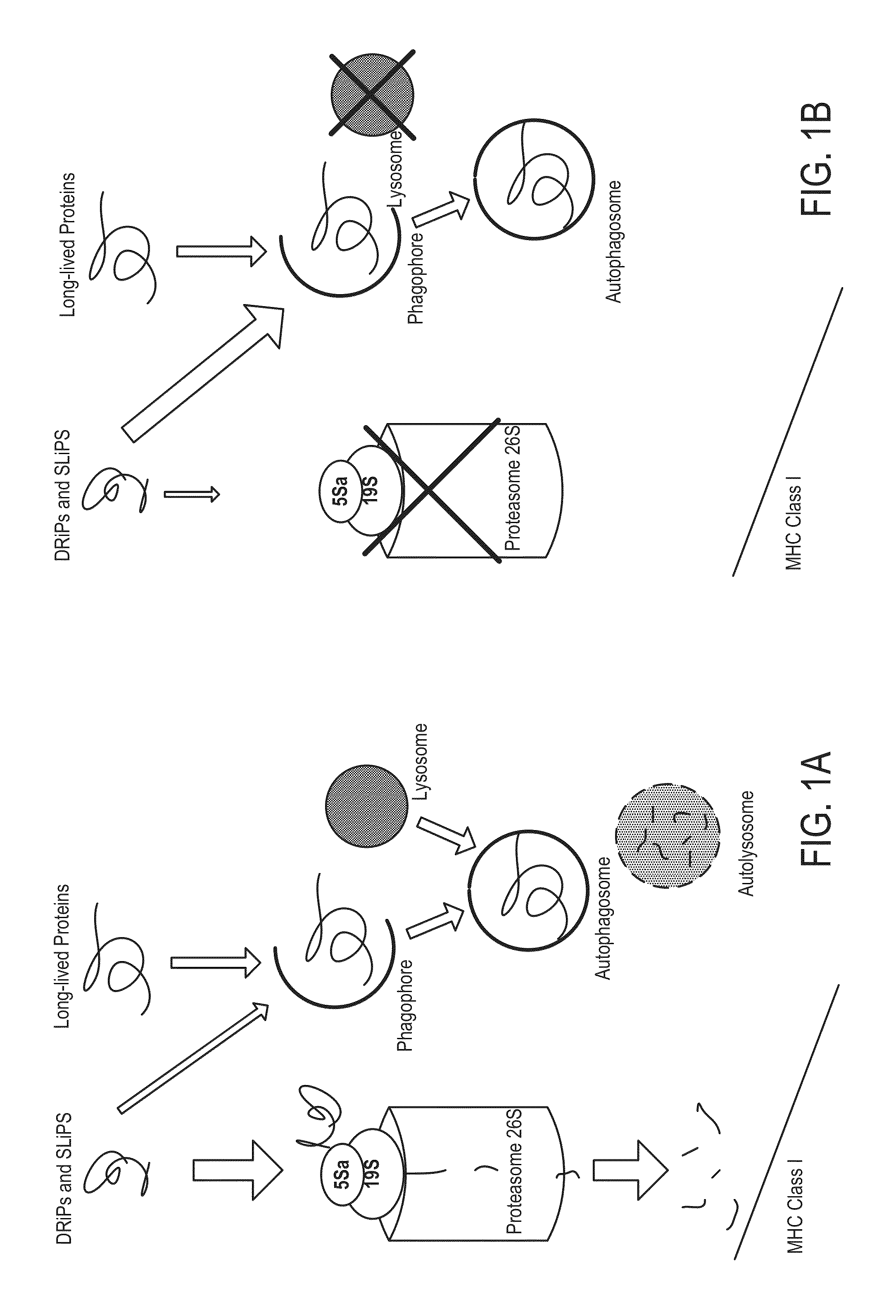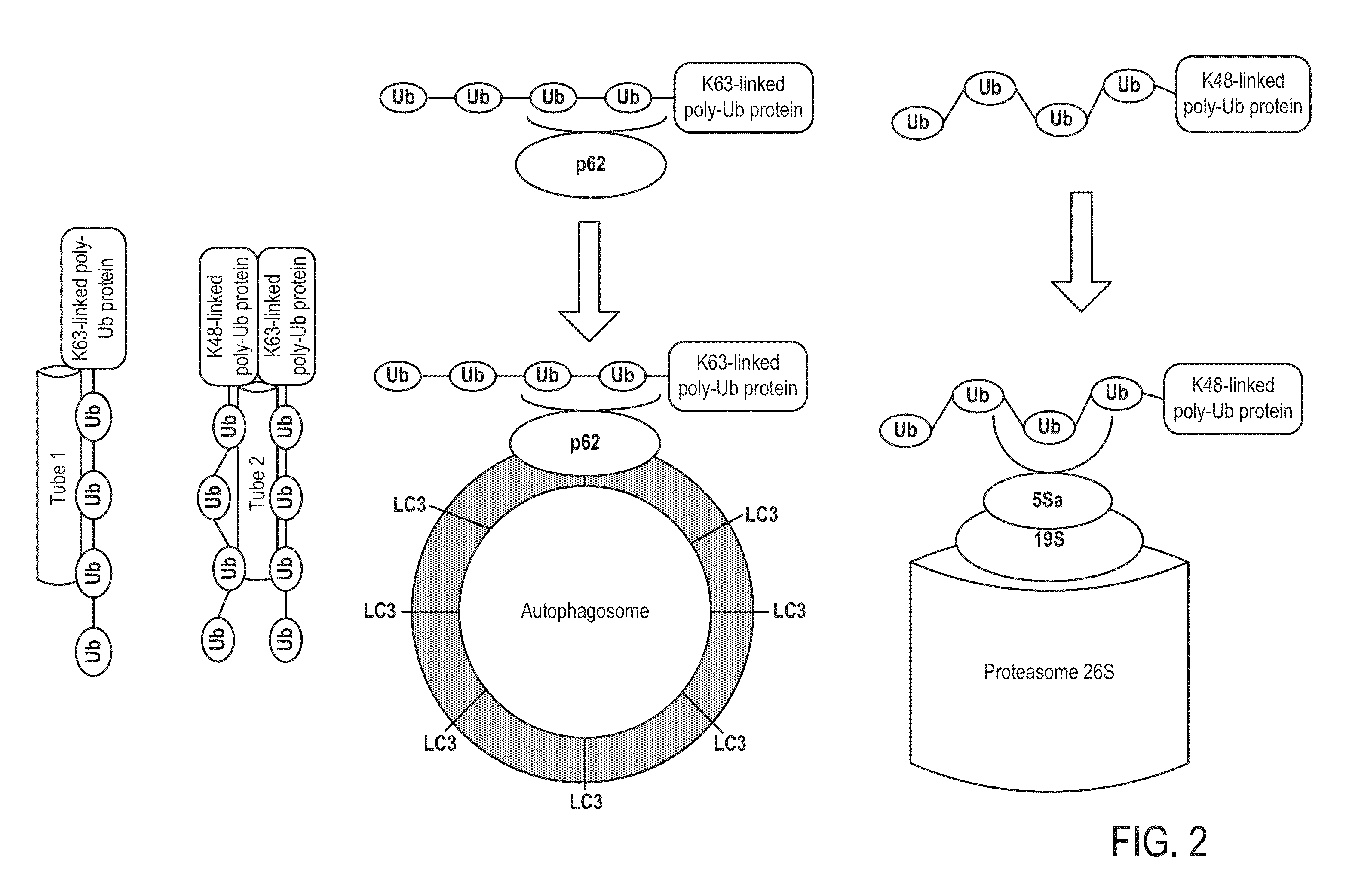Ubiquitinylated proteins
a technology of ubiquitinated proteins and compositions, which is applied in the direction of antibody medical ingredients, carrier-bound antigen/hapten ingredients, immunological disorders, etc., can solve the problems that the methods disclosed in the prior art may not be sufficient to produce and isolate, and achieve efficient cross-presentation, facilitate the degradation of ubiquitinated proteins, and facilitate the turnover of long-lived proteins
- Summary
- Abstract
- Description
- Claims
- Application Information
AI Technical Summary
Benefits of technology
Problems solved by technology
Method used
Image
Examples
example 1
Stimulation of Naïve T-Cells by Cross-Presentation of Isolated Ubiquitinylated Proteins
[0029]Cross-presentation was identified as a means by which antigens can be presented by cells in which they were not synthesized, thus obviating direct presentation as the sole mechanism to prime an immune response. These findings were expanded by the demonstration that cross-presentation of melanoma antigens during vaccination was essential for the generation of an effective anti-tumor immune response. One component of cross-presentation that has been debated and still remains unknown is the source of antigen and the method of its delivery to professional antigen-presenting cells (APC). While some groups have shown that the source of antigen is cellular protein, others argue that it is peptides chaperoned by heat shock proteins (HSPs). Further, it has been demonstrated that cross-priming may result from both the donation of proteasome substrates as well as stable cytosolic peptides in conjunctio...
example 2
Stimulation of Tumor-Specific T Cells by Cross-Presentation of Isolated Ubiquitinylated Proteins
[0038]Historically, cancer vaccine induced T cells are rarely effective at eradicating tumors. The induced T cells, if they can recognize tumors and represent tumor-rejection antigens, often become sequestered, dissipate, undergo apoptosis, or merely fail to expand to levels capable of eradicating a tumor. By providing a broad range of potential tumor-rejection antigens that can be used to stimulate T cells against a spectrum of tumor rejection antigens, the therapeutic efficacy of the expanded T cells may be increased. Further, a broad immune response against a spectrum of tumor antigens will likely reduce the likelihood of tumors escaping from immune elimination, as the tumors would need to downregulate expression of a large number of antigens simultaneously.
[0039]FIG. 6A-6B show graphs of tumor-specific, DRibble primed T cell stimulation by isolated ubiquitinylated protein. Nu77-GFPCre...
example 3
Isolated Ubiquitinylated Proteins Stimulates Inflammatory Response
[0043]Immunological adjuvants rely on the immune inflammatory response in order to potentiate and / or modulate an immune response. FIG. 8 shows a graph of an inflammatory response induced by isolated ubiquitinylated proteins. Peripheral blood mononuclear cells (PBMCs) were seeded in a 96 well plate at 106 cells / well. The PBMCs were then incubated with 5 mM ATP+10 ng / ml Lipopolysaccharide (ATP / LPS) or isolated ubiquitinylated proteins from B78 / H1 cells at 5 μg / ml or 50 μg / ml overnight. The supernatant for each well was then removed and tested for IL-1β by ELISA. As shown in FIG. 8, IL-1β was stimulated in a concentration dependent manner by isolated ubiquitinylated protein from B78 / H1 cells. IL-1β is a pro-inflammatory cytokine, and the production of this cytokine documents the inflammatory nature of the ubiquitinylated proteins. The induction of an inflammatory response is a common property of vaccine adjuvants and wor...
PUM
| Property | Measurement | Unit |
|---|---|---|
| size | aaaaa | aaaaa |
| concentration | aaaaa | aaaaa |
| concentration | aaaaa | aaaaa |
Abstract
Description
Claims
Application Information
 Login to View More
Login to View More - R&D
- Intellectual Property
- Life Sciences
- Materials
- Tech Scout
- Unparalleled Data Quality
- Higher Quality Content
- 60% Fewer Hallucinations
Browse by: Latest US Patents, China's latest patents, Technical Efficacy Thesaurus, Application Domain, Technology Topic, Popular Technical Reports.
© 2025 PatSnap. All rights reserved.Legal|Privacy policy|Modern Slavery Act Transparency Statement|Sitemap|About US| Contact US: help@patsnap.com



